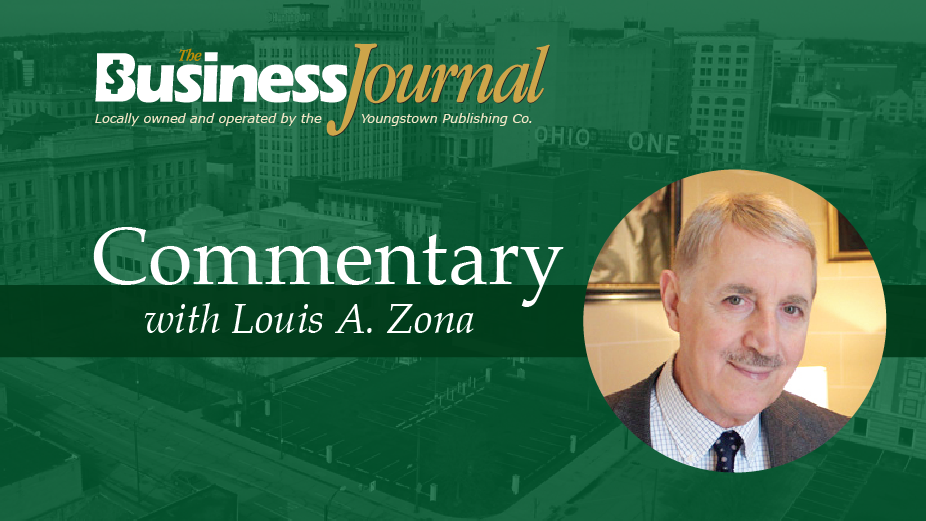By Louis A. Zona
YOUNGSTOWN, Ohio – I was just a kid in the 1950s but I eventually came to realize later that I had lived through an age of innocence. Today when I hear music from that decade, I have a longing to return to the magic of those 10 years. Even as I write these words, I am thrust back to those beautifully innocent times.
Just the other day my late father’s words about life after the Second World War filled my head. I remember that he described Americans being in Europe after the war. “If you wanted to tour Europe back then, Americans need only pin an American flag on their back, and they would be welcomed in every town and village with opened arms.” Sadly, those days are long gone.
Dad would be saddened to learn that the days of the Marshall Plan and its impact on the world are over. What an amazing country that we would rebuild those countries that were once at war with us, or which were destroyed by war. Dad called it “big hearted America” and he was certainly right.
Life in America in the 1950s was not only measured by the success of the Marshall Plan. Every aspect of American life seemed touched by the decade. The feeling was that America could do anything, in fact the bigger, the better.
Even the art of that amazing decade was bigger and more exciting than any art created in Europe at that time. In fact, America’s first international art movement happened in the 1950s.
It was called Abstract Expressionism and was all about large and colorful canvases, which like jazz, were spontaneously created by such artists as Jackson Pollock, Franz Kline and Joan Mitchell.
When you think about it, American art became the envy of the world. Where once Paris had been where it was happening, in the 1950s New York City became the center of the art world.
The very first image that I saw on our first Silvertone television set was the nomination of Dwight Eisenhower, a war hero who was popular with both political parties.
It was said of Eisenhower that he really didn’t do much as president. But the reality was that nothing was exactly what the American people wanted of their president in that decade of growth and general good times.
My dad was the first person on our street to own a television set, which meant our front porch was the busiest place in town as neighbors descended on it, especially on Tuesday nights when Milton Beryl – Uncle Miltie –performed in his Texaco Star Theater.
When I think of the television programming that was aimed at children my age in the 1950s, Howdy Doody with Uncle Bob Smith was always the favorite. But Kukla, Fran and Ollie as well as Paul Winchell and his dummy, Jerry Mahoney, were my personal favorites each Saturday morning.
My parents could have used a new refrigerator in the 1950s, but my dad always worried that the Great Depression would return one day. So, dad would never spend money that he didn’t have in his pocket. The challenge for so many industries was to get people like my father to buy major appliances.
So it was that Betty Furness was hired to demonstrate new washing machines, refrigerators and stoves to my dad’s generation. Furness was up to the task. She was good looking, intelligent and enthusiastic about the appliances that she was pitching – and it worked.
Of course, rock’n’roll was born in the decade and virtually forgotten were the Big Band era and singers like Rosemary Clooney, Jo Stafford, Cab Calloway, and the Andrews Sisters in favor of Elvis Presley, The Everly Brothers, Ricky Nelson and Bill Hayley and the Comets.
My parents were not thrilled with the change in popular music, preferring Frank Sinatra, Dean Martin, Tony Bennett and Ella Fitzgerald to the Big Bopper and Neil Sedaka.
Radio began to lose its popularity in the 1950s, giving way to TV. Gone were such popular radio programs as Fibber McGee and Molly (my older sister Clara loved a famous line that came out of the program “It ain’t funny McGee”). Other popular radio shows were The Lone Ranger, The Shadow (who knows what evil lurks in the mind of man…the Shadow knows!) Amos and Andy, Sargent Preston of the Yukon, and the Jack Benny Show.
The decade also saw the rise of baseball and its golden age. With the New York Yankees truly becoming America’s team, their all-star lineup included such stars as Mickey Mantle (whom I idolized), Yogi Berra, Phil Rizzuto, Roger Mari, and Whitey Ford.
I guess that I painted quite a rosy image of the 1950s – that’s because the times were quite rosy. Show me a time machine and I’m on it destination the 1950s!
